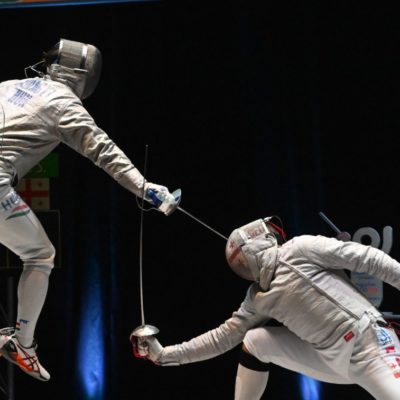Q: Some people have referred to “the point in line fallacy,” which is that any maintained extension constitutes point in line for right of way purposes. What happens to right of way if you hold an extension at the end of an attack?
The attack is finished (with no hit) and the arm is left extended as a point in line. Does the opponent get the right to riposte, or does the newly established line keep priority?
A: There is nothing to clarify this in the rules, but there are many authors who have opinions, as well as just about any coach out there.
My perspective is this:
A line is a line is a line. It exists irrespective of footwork. It can go forward or back, but it must be an essentially passive action. If a line becomes active, it turns into an attack. If the line is executed with unnessary movements (i.e. wiggling around) it loses it’s cohesion as a line, and merely becomes an invitation.
As to the attack that ends in an extended arm, the arm is, indeed, a line. However, the principles of right of way indicate that once the attack has ended, the right of way passes to the opponent. It would be up to the opponent to make some technical blunder (searching for the blade, closing the distance without any threat, etc) for the line to take priority.
Left attacks short and leaves the arm extended in a point in line, right momentarily pauses before beginning the responsive attack. Both fencers hit.
Such an action could be called this way:
Attack from left fails. There is no response from right. Line from left arrives. Touch Left.
If there is no such technical error, the action would be:
Attack from left fails. Counter from right arrives. Touch Right.
The same goes for the “distance parry”, where a fencer “causes the attack to miss” because they time their retreat perfectly. It’s not really a parry, since the rules define a parry as contact with the blade, but it is an evasion, exactly the same as an esquive or a passada soto.
Top referees have been calling this action more frequently, probably because top coaches are teaching it.
Share:





